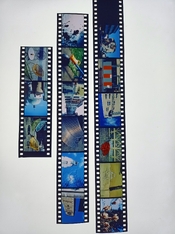So, I shot a test roll with my Rolleicord III with Xenar and rolleikin 35mm adapter.
Metered with Sekonic l-308x. Mostly incident metering.
All scanned with Epson V550 and Epson scan program.
Quick disclaimer: I decided to rate film at 25, 20 and 16 ISO. Why? Because I was afraid that my shutter might be not accurate enough for 16 ISO and narrow dynamic range. And somethimes when I just took one photo I metered for 20 ISO… Turned out I was wrong about my shutter.
Oh and there are some light leaks here and there, all my stupid fault.
Here are my processing steps (all with sous vide):
5min pre-wash @ 38C
6,5min BW developer – Adox 110 1+19 @ 38C
4 x water rinse 30s each @ 38C
4min exposure to light ( my wife’s white light led lamp) in transparent plastic beaker filled with water. Reel fliped after 2min.
*extra step – I realized that temperature has dropped a bit so after puting film back in dev. tank I filled it with water and put for 3min in sous vide to bring it back to 38C before the next step.
3.5 min Color developer – Adox c-tec c-41 - @ 38C (It was roll No. 7 in this chemicals thus longer time)
4 x water rinse 30s each @ 38C
12 min Blix - Adox c-tec c-41 - @ 38C (It was roll No. 7 in this chemicals thus longer time – should be 6min but I understood that for reversal processing I should double the time)
6 min water rinse
1 min stabiliser
Conclusion:
1. Shadows go off super fast.
2. ISO 25 garbage. ISO 20 usable, 16 good, I want to try 12 next rime.
3. Indoor shots were quite interesting, I feel like reciprocity failure kicked in quite fast. Shots that were metered at 16 with ½ shutterspeed could use more light. Shots with 1 sec. Shutterspeed definately need more light. But it might be also my metering error.
4. I also had a redish tint. It’s super easy to correct while scanning. I dont think it would bother me during projection but I dont have slide projector so I can’t really test it.
5. I love those punchy colors, high contrast and crushed shadows. I actually prefer these colors over standard Phoenix color palette.
Question:
For all of you who have more experience that me (it was my first reversal processing!). My unexposed film base is not complately black. Its very dark but still a bit transparent. Does it mean I did something wrong? Should do a longer light exposure or something?














